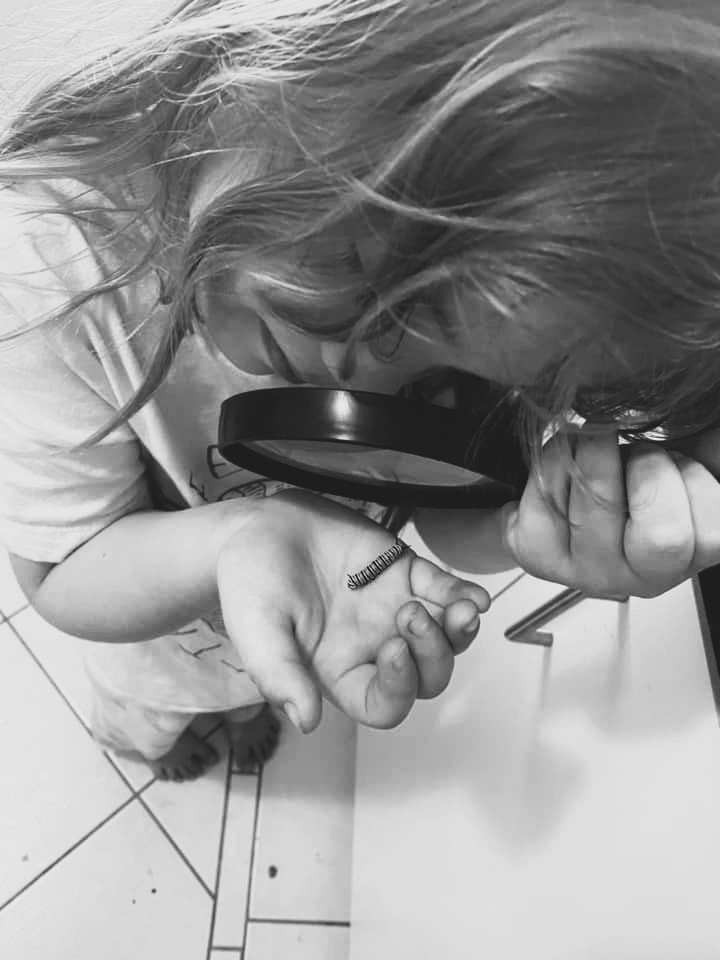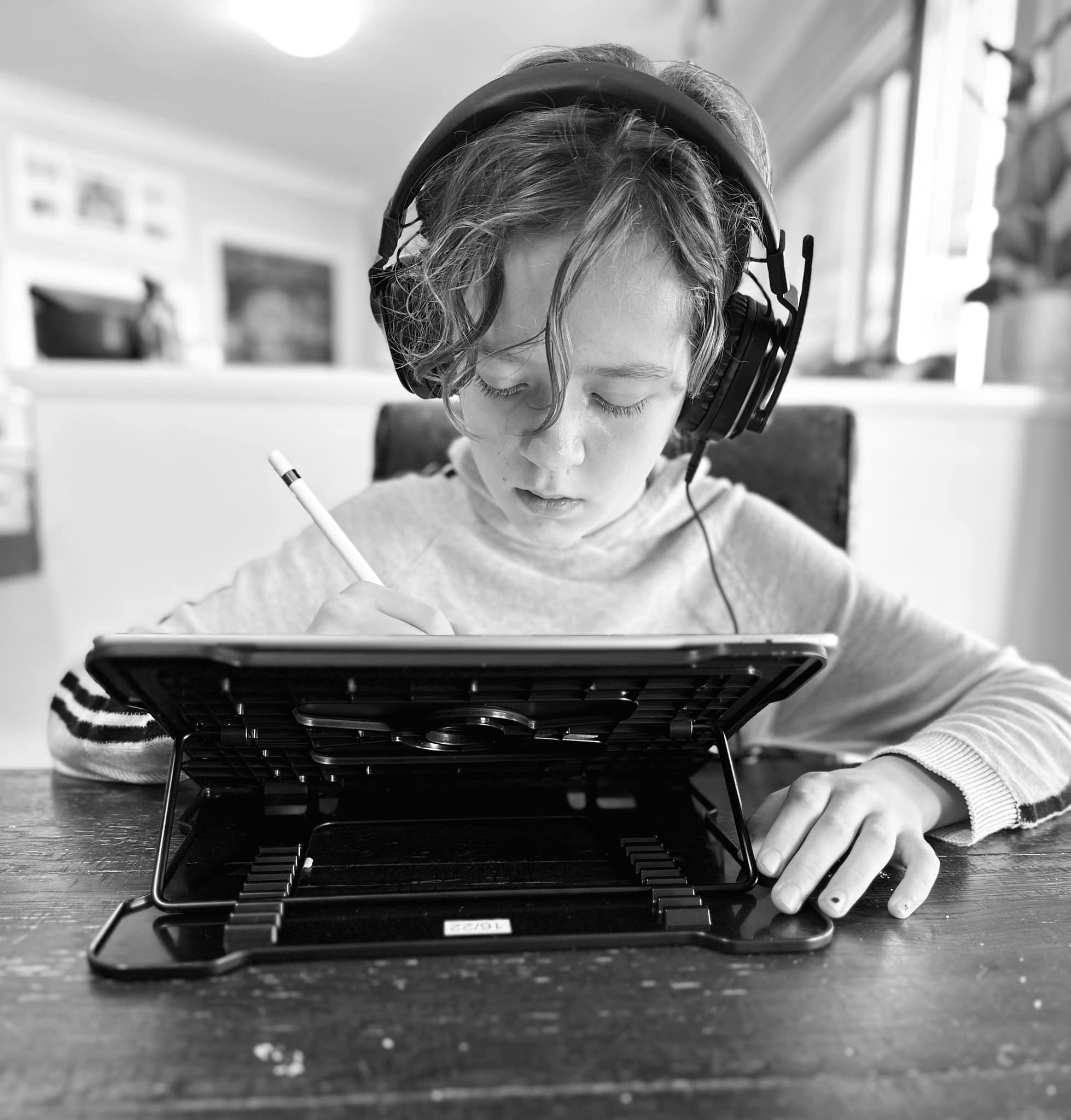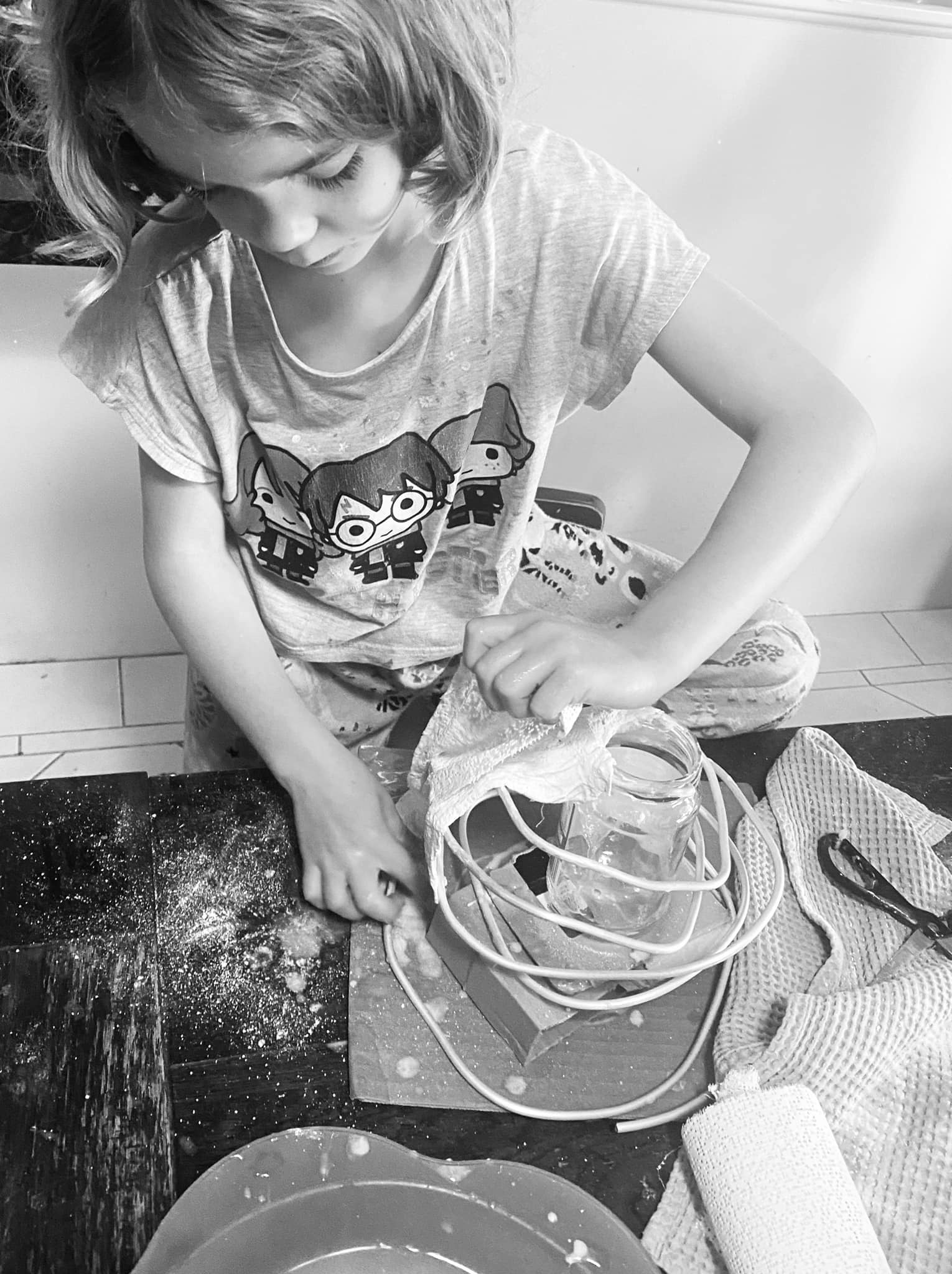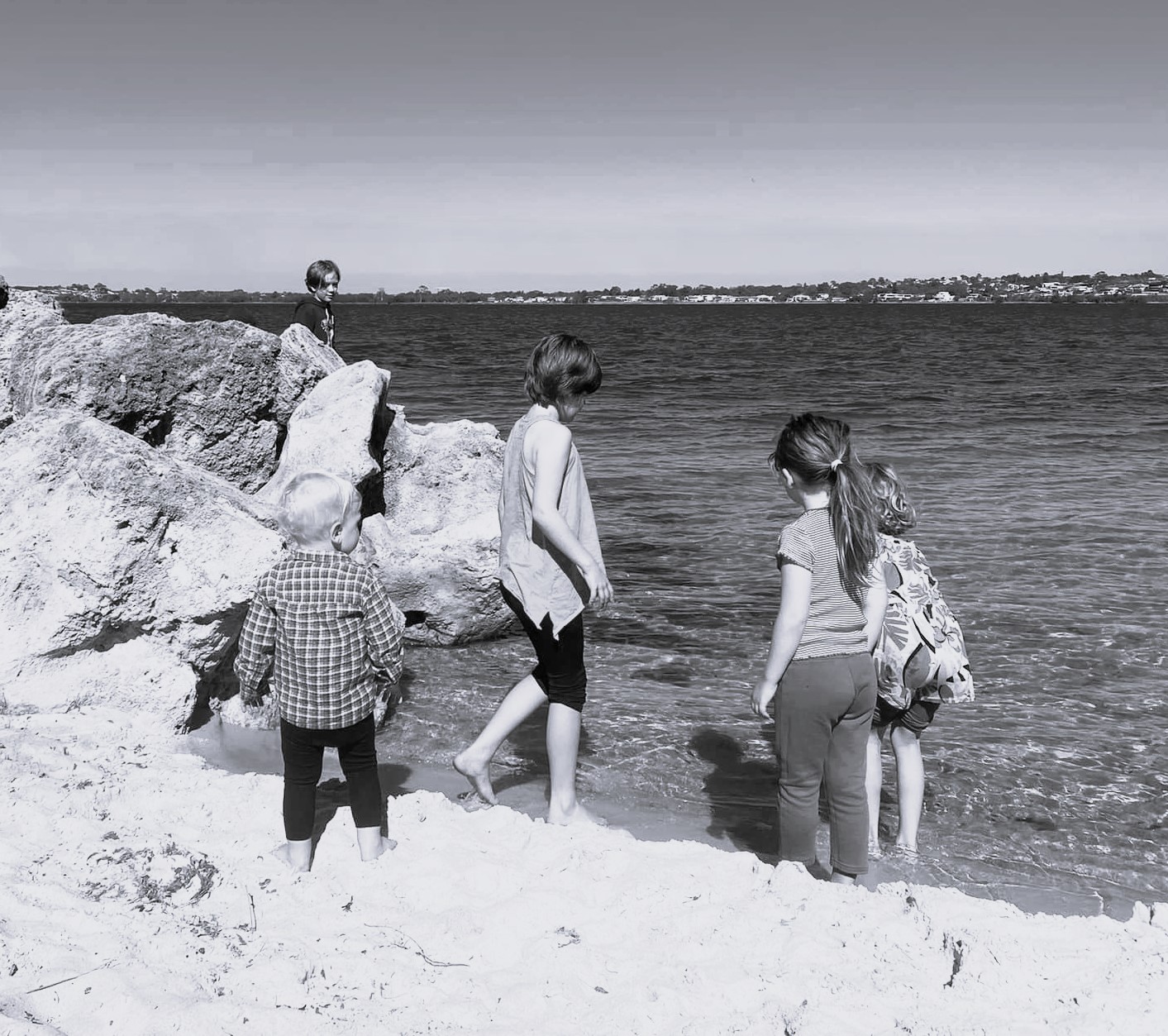Simply Homeschool Family Feature – this is how we homeschool
My name is Bel. I am one of the writers here at Simply Homeschool. I have five children, and we homeschool the biggest four.
I didn’t ever think I would homeschool my children. It was completely off my radar, and something I knew nothing about.
So why did I start?
My mother was diagnosed with a rare, neurodegenerative disease. It is genetic. This disease is passed from parent to child and there is a 50% chance that any child born of a parent with this condition will develop it themselves.
I had made the decision to have children relatively late (I was nearly 32 before my first was born), and, as my eldest was getting ready to start school, it hit me. My mother started showing symptoms of her condition in her 50s. If I had the disease, and I followed the same pattern, I had potentially 15 healthy years left with my two babies. And I was about to send them away, for someone else to teach and guide and just be with. I was going to waste what could possibly be the best years I had left, by sending my babies off to school.
So…
I didn’t.
I kept them all home with me, so that I could be the biggest presence in their life, until the time came that I couldn’t be anymore.
It was a big step, but after 12 months of genetic counselling and genetic testing, my results, thankfully, came back negative to my mother’s condition.
What I discovered in the meantime, was that I LOVED homeschooling my kids. Completely. I loved the freedom, I loved the lifestyle that came with it, I loved spending time with them, I loved being their guide and ensuring the family philosophies were upheld. I couldn’t imagine sending them to school at all. Ever! So, as a family, we made the decision to commit to being home educators. Seven years and three more children down the track and none of them have ever been to school!

In the years since we started, we have travelled to Mauritius. We have travelled up and down the West Coast of Australia many times. We have taken a 13-month 'gap year' and travelled around Australia. Homeschooling has allowed us the freedom to travel, as well as the ability to keep a continuity in the children’s education while we do it. This was also our saving grace during COVID, when so many others struggled with ups and downs and interruptions.
So that is why we homeschool. But how do we homeschool?
In the years since we began, I have been pregnant three times. This means I have never homeschooled without having either a newborn, or a toddler (and for one crazy year, I had both!).
My husband and I have never been comfortable with how early children are schooled in the mainstream system.
We believe that childhood is fleeting, and we believe that little ones should be afforded the time to play and learn and explore and socialise and just 'be little'. So, for this reason, we unschool our youngest children. They do not do any formal lessons - there are no workbooks, worksheets, or classes, and there is no pressure for them to participate in anything they don’t want to. Having said that, if you are familiar with unschooling you will know this does not mean they do nothing. Anything they choose to learn about is facilitated. They are offered the opportunity to engage and join in with whatever the older children are doing. And there is lots and lots of learning through play, games, books, puzzles, reading aloud, exploring the world, and just living life. This approach not only aligns with our educational philosophies, but also makes life simple and easy for me as the educator, and us as a family. It means the little ones are usually content, which means the older children get my full attention when they need me to help with their lessons, and it means I get to keep my sanity by not stretching myself too thin.
Right now, I have a two-year-old, and a five-year-old, who are both in this category. They enjoy a life of freedom and fun. They spend most of their day outside, and they are constantly surrounded by their siblings and their friends and their family; learning from, and being guided by, people who love them, and have a genuine and invested interest in their lives.
Once the children reach approximately seven years old, we invite them to join in with lessons. They begin learning how to read and write, and they join in more workshops and classes with the bigger kids.

We are an eclectic homeschooling family. For lessons, I use an online maths subscription coupled with workbooks linked to the Australian curriculum, as well as Simply Homeschool cores, mixed with some Waldorf lessons, and some curriculum that I have written myself, which has been tailored to suit the individual needs of each child. It sounds a bit hodgepodge on paper, but, in fact, we have a lovely mix of different approaches and lessons to draw from, depending on our mood and the weather.
The children, at this age, only do between 45 – 90 minutes of 'schoolwork' a day, and still spend most of their time exploring and playing and having fun.
At the moment, I have one child who will be eight early in 2023. She is enjoying learning how to read and write, and there is no pressure on her to keep up with anyone else. She is very eager to pull out her maths workbook, even on the weekends! She sits at the table with her older siblings and does her portion of the lesson, and then leaves the table to paly with her younger siblings when she is done. During the time she is at the table, my older girls do the work they can do independently – or at least mostly independently – so she has the bulk of my attention, as she is the one who needs the most scaffolding. When they are all at the table together, I find a unit study approach the easiest, as I can pick one topic, and everyone learns the same thing, but each at their individual, age-appropriate level.
I currently have two 'big girls' who are nearly ten and twelve years old. This is the time where we step up the quantity of work expected from them. Both of my big girls can read and write independently, so they can work on their own interests and at their own academic levels, without me having to constantly sit by their side. I stay in the room (usually doing my own work, or study), and am on hand for them, if they need me.
My ten-year-old is required to do maths and English daily, as well as one course of lessons of my choosing and one course of lessons of her choosing per week. The weekly lessons cover things like science, HASS and the arts. Again, the lessons are a mix of purchased maths subscription, Waldorf style lessons, Simply Homeschool cores and curriculum that I have written, just for them. My ten-year-old is currently enjoying working her way through the My Side of the Mountain core, as well as learning all about space.
Lastly, my twelve-year-old has just finished primary school – which was such a validating milestone, for all of us! – and is about to enter high school. Truth be told, she has been working through the high school curriculum, in a lot of areas, for a couple of years, but now she can officially use the title. As she is officially in secondary school, there is more of an expectation on the quantity of work that she does. She is expected to do maths and English every day, as well as two courses of lessons of my choosing, and two courses of lessons of her own choosing, every week. She is readying herself for tertiary education, just as any mainstream-schooled child would be, and is looking forward to starting some online university classes in the next couple of years.
So, this eclectic mix of curriculum is what we do when we are at home. However, every homeschooler knows that homeschooling does not only happen in the house. Mixed with all that I’ve mentioned already, we have regular sports classes, drama/dance classes, creative writing classes, science classes, STEAM co-ops, social groups, Children’s University Australia, and nature club. We also have an abundance of workshops, excursions and incursions that keep us busy. So busy in fact, that I must schedule 'at home days' into our weekly timetable to make sure all the beautifully prepared, eclectic curriculum I have put together, actually gets done!

One other thing I do with the children, that I feel is important, is sit with them and set goals at the beginning of every year. They work on their goals all year, and, at the end of the 12 months, we celebrate what they have achieved. I insist each child (who is old enough to understand) sets four goals for themselves. One academic, one personal development, one creative and one community-focused. The children must think of things that require work and effort – things that are worthy of a year-long deadline! Some of the goals for 2023 include improving handwriting, improving essay writing, and learning how to read. There is also creating a garden, painting a mural, and learning how to use the potter’s wheel. And in the community-minded space, there is volunteering regularly at a soup kitchen, raising money for the guide dog’s association, and fundraising for the purchase of Christmas presents for needy children.
To keep track of all of this, I have a timetable for our at-home-lessons, pinned up in our learning space. I find it helps the children if they know what happens each day; so they can get themselves into the rhythm of learning. I also have a blackboard, in the kitchen, where I write down any external classes, clubs, lessons, workshops or social gatherings happening during the week. This is where everyone can see it, and its very visible, otherwise I am likely to forget!
Lastly, I carry my planner with me. I use the Simply Homeschool planner and it is fabulous! There is a section for each child – and enough sections for ALL my children, which is a godsend for larger families! I can list the lesson plans I have prepared, the goals we’ve made, what we do from day to day, and there is an amazing graph, that I can colour in and see, immediately, how much has been covered by each child. There is also room to list excursions, outings, and workshops as well as books they’ve read, places they’ve visited and even relevant films/documentaries that they’ve seen! At the end of the year, I have a complete record of what each child has done that I can pass on to my moderator. Happy days!
There is a lot more to it than that, obviously, but that’s the outline of what we do. Sometimes we stick to the plan, sometimes the plan gets put aside, and sometimes we are so far removed from the plan that I forget what the plan is! But it works for us, and has all been fine, so far, so I can’t see us changing things any time soon.
I have always said, to anyone who asks, as well as to myself, when I need reminding; the best way to homeschool is the way that works for you! What we do won’t be right for everyone, but it’s right for us, and I wouldn’t have it any other way.

